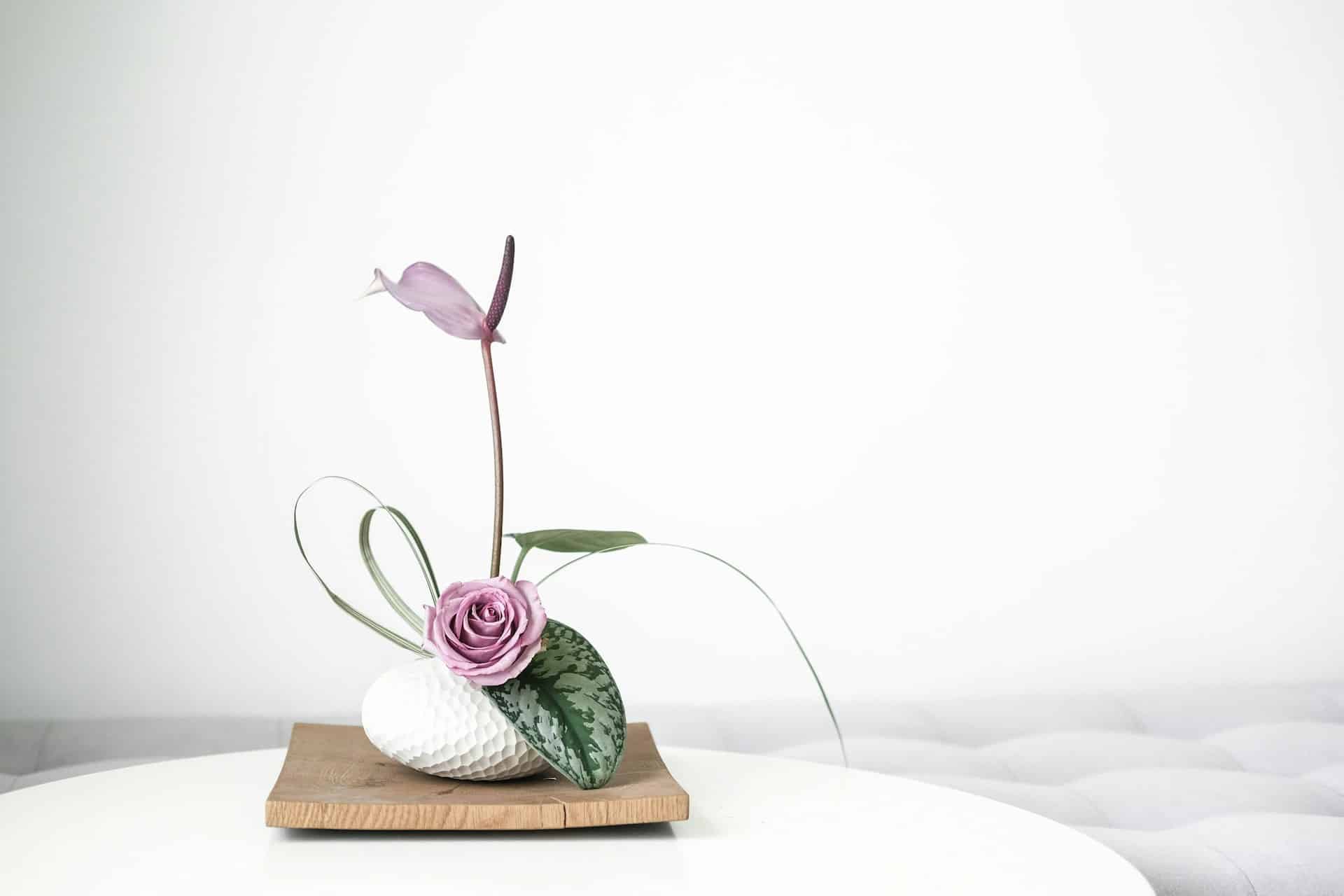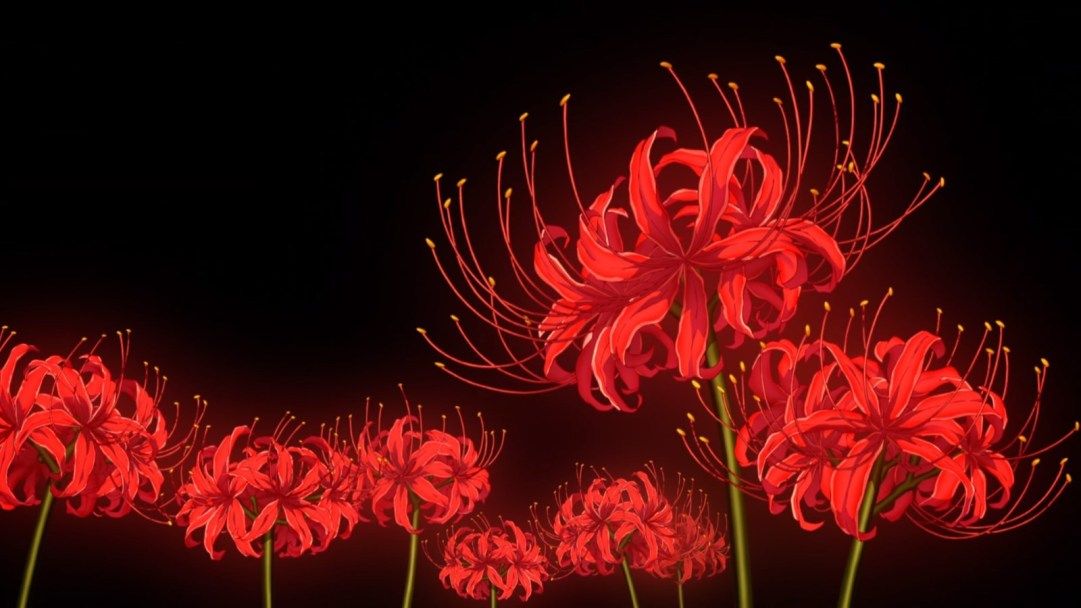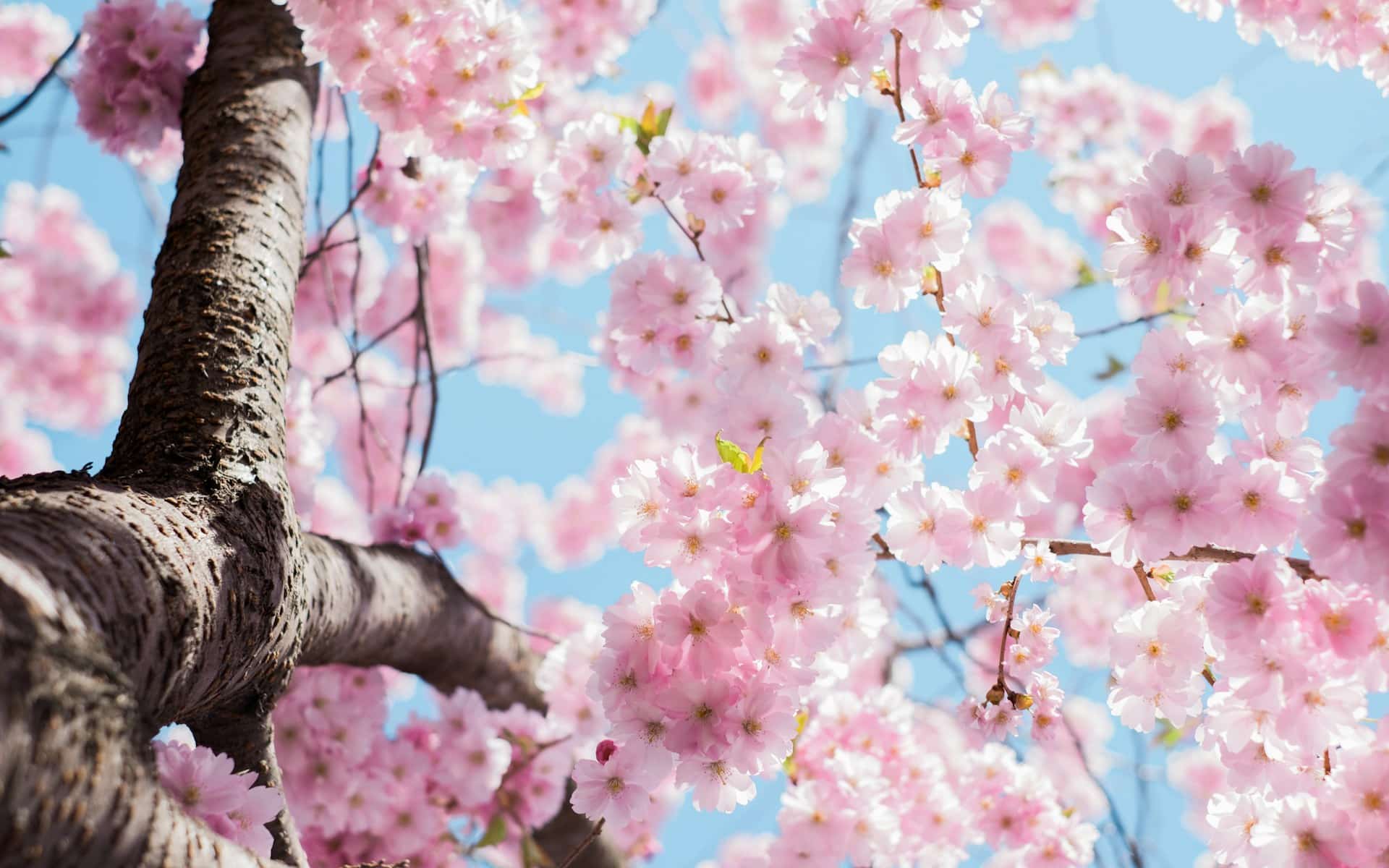Common Flowers in Japanese, from Names to Hidden Meanings
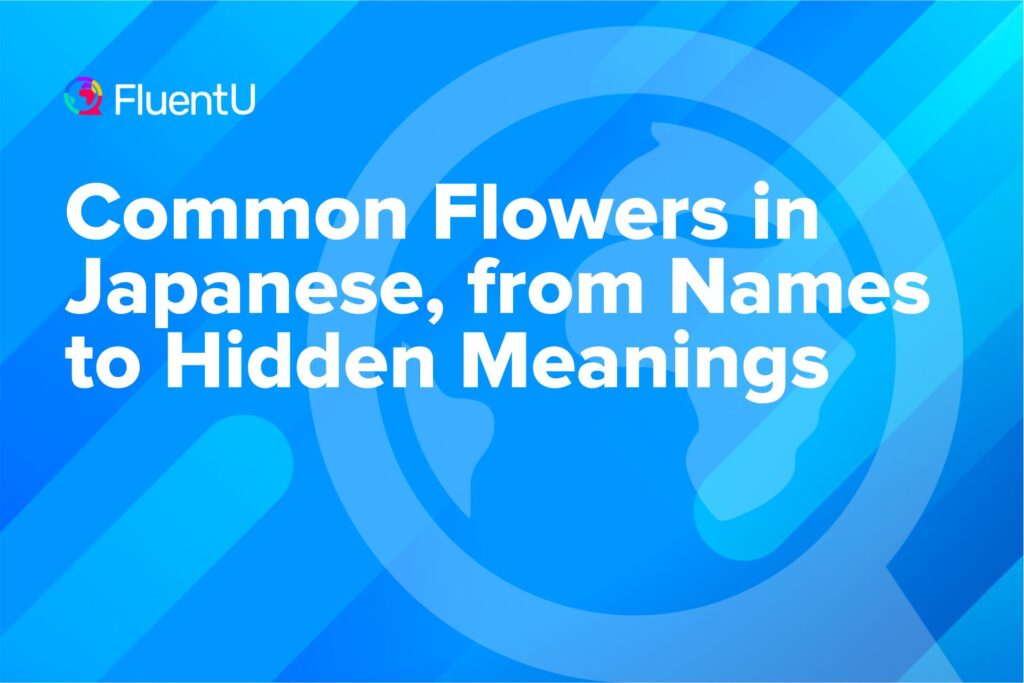
In Japanese culture, the flowers you get and even the way they’re arranged can send completely different messages. You might already know that cherry blossoms are celebrated in Japanese culture as beautiful and transient. But did you know that the iris is the symbol of the Japanese Boys Festival and samurai, or that the striking red spider lily is thought to guide the dead to the afterlife?
By the end of this post, you’ll have all the vocabulary you need to talk about flowers in Japanese and understand the hidden meanings behind different blossoms.
Download: This blog post is available as a convenient and portable PDF that you can take anywhere. Click here to get a copy. (Download)
Writing Flower Words in Japanese
Flower words have a special place in Japanese culture, as well as its written language. When reading or writing about flowers, there are two important things to keep in mind.
The Word for “Flower” Has Two Kanji
The word for “flower” in Japanese is hana, and it’s written with this kanji: 花.
That is, usually. You might also see it written like this: 華.
The practice of using two kanji for the same word is called 同訓異字 (doukun iji), which roughly means “same reading, different character” and is similar to English homonyms.
Both of the kanji above are pronounced hana but 華 is more poetic than 花.
You’re much more likely to see 花, but it’s worth knowing both!
Flowers Names Are Often Written in Katakana
You might notice that instead of seeing the kanji for a flower, you’re more likely to see a flower name written in katakana.
There are two main reasons for this.
First of all, in academic contexts, animal, insect and plant names are written in katakana, much like Latin names are written in italics in English. This practice simply stuck around, though it’s more common with plant and flower names than animal names.
Secondly, the kanji for many flowers are often quite complicated. Just look at the kanji for azalea: 躑躅. Wow! It’s so much easier to remember ツツジ, isn’t it?
Flowers in Japanese Culture
The fleeting nature of flowers, especially cherry blossoms, resonates deeply with the Japanese concept of 物の哀れ (mono no aware) — the understanding and appreciation of impermanence. Sakura, and flowers in general, have an important position in Japanese culture.
Here are some of the ways that flowers are celebrated in Japan.
Hanakotoba: The Language of Flowers
Similar to the Victorian language of flowers in the West, 花言葉 (hanakotoba) focuses on individual flower meanings based on appearance, historical context and literary references. Each bloom carries a message, allowing a flower arrangement to tell an entire story.
For example, cherry blossoms symbolize the ephemeral nature of life, while red camellias represent love or a noble death (depending on context).
Ikebana: The Art of Floral Arrangement
生け花 (ikebana), sometimes called 華道 (kadou), is the Japanese art of flower arrangement. It involves arranging flowers, stems and other natural elements in a harmonious and balanced way, often emphasizing asymmetry and negative space.
Ikebana practitioners focus on capturing the essence of nature and expressing it through their arrangements, which are often highly stylized and symbolic.
There are various schools of ikebana, each with its own principles and techniques. No matter which school you follow, though, mastering ikebana is a lifelong pursuit.
Flowers in Rituals and Ceremonies
Flowers are integral to various ceremonies and rituals, from weddings and funerals to temple offerings.
Specific blooms are chosen for their symbolic meaning. For instance, white lilies symbolize purity at weddings, while chrysanthemums represent longevity and are used in imperial ceremonies.
Tea ceremonies have their own type of arrangements, called 茶花 (chabana).
As you can see, flowers play an important role in Japanese culture and traditions!
Popular Japanese Flowers and Their Meanings
I’ve already mentioned hanakotoba, or the language of flowers. But what exactly are the flowers and their meanings? Here are some of the most common flower meanings in Japanese culture:
桜 (sakura) — Cherry Blossom
Symbolizes: Transience, beauty and impermanence.
Perhaps the most well-known Japanese flower, the beautiful pink flowers remind us to celebrate small moments before they’re gone. The blossoms symbolize the fleeting beauty of life and the arrival of spring.
Every year, hundreds of people gather for 花見 (hanami), or flower-viewing festivals, to picnic under the falling petals of the delicate cherry flowers.
梅の花 (ume no hana) — Plum Blossom
Symbolizes: Perseverance, renewal and good fortune.
The hardy plum blossom is known for its perseverance, as it blooms in early spring, even when there’s still snow.
Like the sakura blossom viewings in the spring, plum blossoms are celebrated in festivals called 梅まつり (ume matsuri), which typically take place during the late winter to early spring months when the plum trees are in full bloom.
菊 (kiku) — Chrysanthemum
Symbolizes: Longevity and rejuvenation.
This flower is often associated with the Imperial Family and the Japanese Emperor, serving as the imperial crest and appearing on official seals and currency.
The chrysanthemum is also celebrated during the Chrysanthemum Festival, known as 重陽の節句 (choyo-no-sekku), held in September or October. During this festival, people display chrysanthemum flowers and arrangements, and participate in exhibitions, honoring the flower’s symbolism and its connection to Japanese heritage.
菖蒲 ( ayame ) — Iris
Symbolizes: Courage and strength.
The iris is associated with the Japanese Boys’ Festival, known as 端午の節句 (tango no sekku) or 子供の日 (kodomo no hi), celebrated on May 5th. During this festival, iris leaves are used to ward off evil spirits and the flowers are displayed as decorations to pray for the healthy growth and success of boys.
The iris also has historical connections to samurai culture, as it was used as a motif in their armor and crests, symbolizing strength, valor and nobility.
椿 (tsubaki) — Camellia
Symbolizes: Honor and gratitude.
The camellia thrives in various climates and soil conditions, and its enduring nature make it an ideal symbol of both beauty and strength. It’s most well-known as the symbol of the samurai code of honor, 武士道 (bushido).
The elegant camellia is also used in traditional Japanese tea ceremonies.
彼岸花 ( higanbana ) — Red Spider Lily
Symbolizes: Death, reincarnation and the cycle of life.
This flower’s striking appearance makes it popular in gardens and landscapes. It’s believed to guide the dead, and its association with death and the afterlife means you’ll frequently see it planted in graveyards, as well. It’s often seen in Japanese media like anime as a symbol of death, like in the image from “Demon Slayer” at the head of this section.
The higanbana is also sometimes used in traditional medicine and folklore for its medicinal properties and as a protective charm against evil spirits.
紫陽花 (ajisai) — Hydrangea
Symbolizes: Transformation and apology.
Hydrangeas are groups of vibrant blue, purple or pink flowers that are often associated with the rainy season for their propensity to bloom in the seasonal showers. The flower’s ability to change color depending on soil acidity adds to its symbolism of change and transformation.
It’s also used in various rituals and festivals, such as the Hydrangea Festival, known as あじさい祭り (ajisai matsuri), where people gather to appreciate the flowers’ beauty and offer prayers for emotional healing and reconciliation.
百合 (yuri) — Lily
Symbolizes: Purity, innocence and renewal.
Lilies are often associated with spirituality and the divine, making them a common motif in religious ceremonies and rituals.
The lily’s graceful appearance and sweet fragrance have also made it a popular subject in art, literature and poetry, where it’s used to evoke feelings of beauty and serenity.
Additionally, the lily is sometimes used in traditional medicine for its therapeutic properties.
藤 (fuji) — Wisteria
Symbolizes: Elegance, tenderness and nostalgia.
The wisteria is admired for its cascading clusters of flowers, which bloom in various shades of purple, blue, pink and white. It’s known as fuji in Japanese, named after Mount Fuji due to its resemblance to the mountain’s cascading slopes when it blooms.
The striking flower is often featured in traditional Japanese gardens, where it’s trellised to create stunning displays during its blooming season in spring.
向日葵 (himawari) — Sunflower
Symbolizes: Adoration, vitality and longevity.
The sunflower’s association with the sun and its habit of turning to face the sun throughout the day further reinforces its symbolism of vitality and resilience. Its vibrant yellow petals and distinctive shape evoke feelings of warmth and positivity.
Flower-related Vocabulary in Japanese
Before we get into more specific flower names in Japanese, it’ll help to know some more general words associated with flowers and gardening. Get started with the words below, then discover more floral vocab on FluentU.
FluentU takes authentic videos—like music videos, movie trailers, news and inspiring talks—and turns them into personalized language learning lessons.
You can try FluentU for free for 2 weeks. Check out the website or download the iOS app or Android app.
P.S. Click here to take advantage of our current sale! (Expires at the end of this month.)

| English | Japanese | Romaji |
|---|---|---|
| Annual | 一年生 | ichinensei |
| Bee | 蜂 | hachi |
| Biennial | 二年生 | ninensei |
| Bloom | 咲く | saku |
| Blossom | 花 | hana |
| Botany | 植物学 | shokubutsugaku |
| Bouquet | 花束 | hanataba |
| Bud | つぼみ | tsubomi |
| Butterfly | 蝶々 | chouchou |
| Garden | 庭 | niwa |
| Gardening | 園芸 | engei |
| Garland | 花輪 | hanawa |
| Germinate | 発芽 | hatsuga |
| Greenhouse | 温室 | onshitsu |
| Meadoq | 草原 | sougen |
| Nectar | 花蜜 | kamitsu |
| Potted plant | 鉢植え | hachiue |
| Perennial | 多年生 | tanessei |
| Petal | 花びら | hanabira |
| Pistil | 雌しべ | meshibe |
| Plant | 植物 | shokubutsu |
| To pollinate | 受粉 | jufun |
| To prune | 剪定 | sentei |
| Root | 根 | ne |
| Seed | 種 | tane |
| Sprout | 芽 | me |
| Stamen | 雄しべ | oshibe |
| Stem | 茎 | kuki |
| To plant | 植える | ueru |
| Vase | 花瓶 | kabin |
| To wilt | しおれる | shioreru |
| Wreath | 花輪 | hanawa |
Flower Names in Japanese
And here are even more flower names in Japanese!
| English | Katakana Name | Romaji of Katakana Name | Japanese Name | Romaji of Japanese Name |
|---|---|---|---|---|
| Aster | アスター | asutā | 紫苑 | shion |
| Azalea | アザレア | azarea | ツツジ | tsutsuji |
| Baby's Breath | カスミソウ | kasumisou | ||
| Begonia | ベゴニア | begonia | シュウカイドウ | shuukaidou |
| Carnation | カーネーション | kaaneeshon | ||
| Coneflower | コーンフラワー | koonfurawaa | ||
| Cosmos | コスモス | kosumosu | 秋桜 | kosumosu |
| Cyclamen | シクラメン | shikuramen | ||
| Dahlia | ダリア | dahlia | ||
| Daisy | デイジー | deijii | ||
| Daffodil | 水仙 | suisen | ||
| Delphinium | デルフィニウム | derufiniumu | ||
| Forget-Me-Not | ワスレナグサ | wasurenagusa | 勿忘草 | wasurenagusa |
| Foxglove | ジギタリス | jigitarisu | ||
| Freesia | フリージア | furiijia | ||
| Fuchsia | フクシア | kuchinashi | ||
| Gladiolus | グラジオラス | gurajiorasu | ||
| Hibiscus | ハイビスカス | haibisukasu | ||
| Hyacinth | ヒヤシンス | hiyashinsu | ||
| Jasmine | ジャスミン | jasumin | ||
| Lavender | ラベンダー | rabendaa | ||
| Lilac | ライラック | rairakku | ||
| Marigold | マリーゴールド | mariigoorudo | 金盞花 | kinsenka |
| Morning Glory | モーニンググローリー | mooninguguroorii | 朝顔 | asagao |
| Orchid | オーキッド | ookiddo | 蘭 | ran |
| Pansy | パンジー | panjii | ||
| Peony | シャクヤク | shakuyaku | 牡丹 | botan |
| Petunia | ペチュニア | pechunia | ||
| Poppy | ポピー | popii | ||
| Primrose | プリムラ | purimuroozu | サクラソウ | sakurasou |
| Queen Anne's Lace | クィーンアンズレース | kwiin anzu reesu | ||
| Rhododendron | シャクナゲ | shakunage | ||
| Rose | バラ | bara | 薔薇 | bara |
| Snapdragon | キンギョソウ | kingyosou | ||
| Tulip | チューリップ | chuurippu | ||
| Zinnia | ジニア | jinia |
Speak the language of flowers in Japanese, both through the vocabulary and the blooms you choose to plant and gift!
And One More Thing...
If you love learning Japanese with authentic materials, then I should also tell you more about FluentU.
FluentU naturally and gradually eases you into learning Japanese language and culture. You'll learn real Japanese as it's spoken in real life.
FluentU has a broad range of contemporary videos as you'll see below:

FluentU makes these native Japanese videos approachable through interactive transcripts. Tap on any word to look it up instantly.
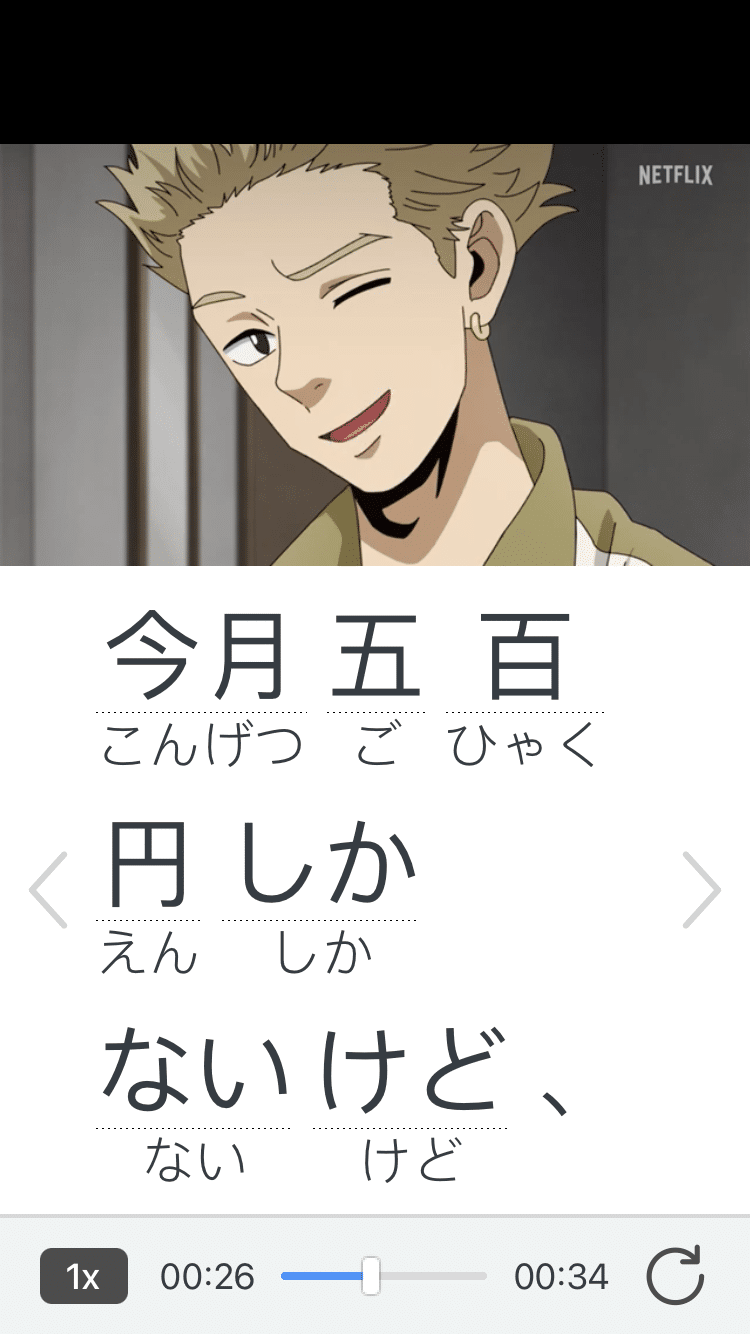
All definitions have multiple examples, and they're written for Japanese learners like you. Tap to add words you'd like to review to a vocab list.

And FluentU has a learn mode which turns every video into a language learning lesson. You can always swipe left or right to see more examples.
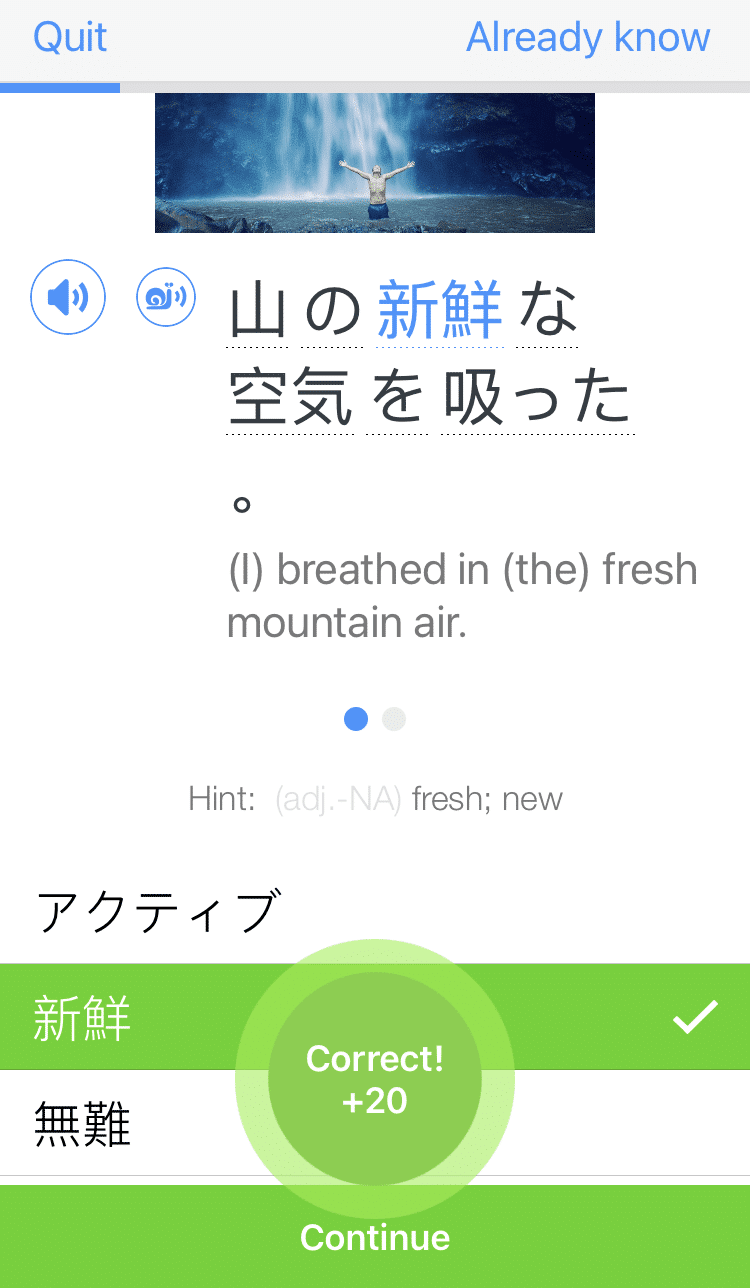
The best part? FluentU keeps track of your vocabulary, and gives you extra practice with difficult words. It'll even remind you when it’s time to review what you’ve learned. You'll have a 100% personalized experience.
Start using the FluentU website on your computer or tablet or, better yet, download the FluentU app from the iTunes or Google Play store. Click here to take advantage of our current sale! (Expires at the end of this month.)
